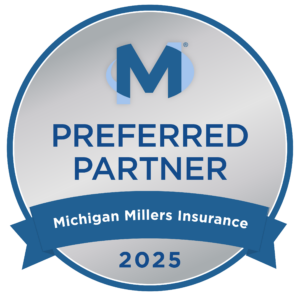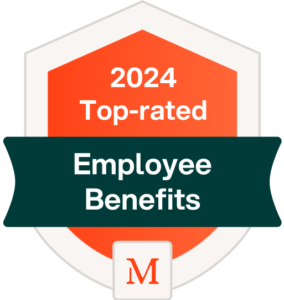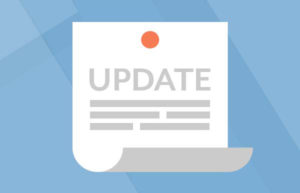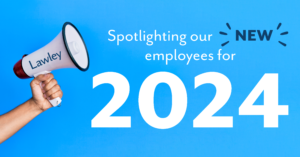Could your employees afford a $50,000 coverage gap in your HDHP? Here’s how Voluntary Supplemental Coverage could come to the rescue


In an effort to control benefit costs employers are turning to High Deductible Health Plans (HDHPs). In order to combat the resulting coverage gaps and high deductibles, they are then paired with Health Savings Accounts (HSAs). According to Health Payer Intelligence, High deductible health plan and health savings account enrollment reached 21 million members in 2017 and is expected to continue to climb over the next few years.2
In a 2017 study, the Henry J Kaiser Family Foundation found that over the past five years, enrollment in HDHP/HSA plans has increased from 20% of covered workers to 29%. As a result of this increased popularity, deductibles are on the rise. While the average annual deductible ($2447) for single coverage workers has increased by 39%, the deductible among all covered workers has increased by 53%.4
With Rising Deductibles Comes Rising Out-of-Pocket Costs
As reported by ObamaCareFacts.com, out-of-pocket (OOP) maximums (the most that HDHP members could potentially pay OOP) are steadily increasing.1 The Economic Policy Institute has found that since 2006, OOP costs have risen faster than total costs paid by insurers. Further compounding the situation, wage increases aren’t keeping up with the rise in healthcare costs. Simply stated, people are spending more of their income on health insurance than ever before.5
Don’t Forget Prescription Costs
Additionally, these deductibles often now include the prescription component of the health plan. While maintained separately in the past, prescription coverage doesn’t kick in until after the deductible is met. To make matters worse, prescription drug prices are rising exponentially. According to Statista, in 2018 the overall U.S. prescription drug expenditure was up to $360 billion, 6% higher than in 2017.3
While HSAs are theoretically put in place in an effort to help fund employees OOP costs, in reality they do not. Kaiser reported, the average employer HSA contribution for a single person is $603. That’s only twenty-five percent of the average annual deductible of $2447 for a single person’s coverage in HDHPs. 4
The Coverage Gap
In many cases, employers that sponsor HSA-qualified HDHP do not make any contributions to the HSAs established by their employees. As a result, most HSAs are not adequately funded compared to the employee’s out of pocket exposure.
Pairing an HSA with a HDHP often creates a false sense of security, especially since only 11% of employees contribute the full eligible amount to their HSA.2 Even high-income earners who can afford to contribute the HSA maximum use these accounts as a spending account, not a savings account, in order to mitigate the out-of-pocket health care costs created by large HDHP coverage gaps.
Voluntary Supplemental Coverage to the Rescue
Supplemental expense insurance coverage can pay from $5,000 to $100,000 annually for health expenses that fall into these coverage gaps. Examples of scenarios covered by this type of program are accident, specified disease, and hospital confinement. These indemnity style plans will pay the employee cash to help with these coverage gaps and exposures.
Additional features can include worldwide coverage and portability for the employee. Also, several insurance partners that write these plans offer coverage with no increase in premiums as enrollees age. These plans can be written on a group basis or individually and can all be funded with convenient payroll deductions for easy administration.
Each individual’s lifestyle and needs vary from one to the next. Individual and/or group supplemental coverage plans offer a broad range of options for employees and families. And, when used properly they can fill the coverage gap created by a poorly managed HDHP/HSA.
Don’t create a situation where your employees have to burn through their savings to fill a $5,000 or $50,000 coverage gap. Contact me and I will show you how affordable this solution can be.
Brian Boreanaz, GBDS, VBS
Lawley Employee Benefits Consultant
1. An Independent Site For Obamacare Help & Advice. (n.d.). Retrieved from https://obamacarefacts.com/
2. HealthPayerIntelligence. (2018, April 16). High-Deductible Health Plan, HSA Enrollment Reached 21M in 2017. Retrieved from https://healthpayerintelligence.com/news/high-deductible-health-plan-hsa-enrollment-reached-21m-in-2017
3. Prescription drug expenditure U.S. 1960-2019 | Statistic. (n.d.). Retrieved from https://www.statista.com/statistics/184914/prescription-drug-expenditures-in-the-us-since-1960/
4. Employer Health Benefits Survey – Section 8: High-Deductible Health Plans with Savings Option. (2018, July 31). Retrieved from https://www.kff.org/report-section/ehbs-2017-section-8-high-deductible-health-plans-with-savings-option/
5. The rising price of health care costs American families thousands of dollars a year in forgone wages, out-of-pocket costs, and increased taxes. (n.d.). Retrieved from https://www.epi.org/press/the-rising-price-of-health-care-costs-american-families-thousands-of-dollars-a-year-in-forgone-wages-out-of-pocket-costs-and-increased-taxes







